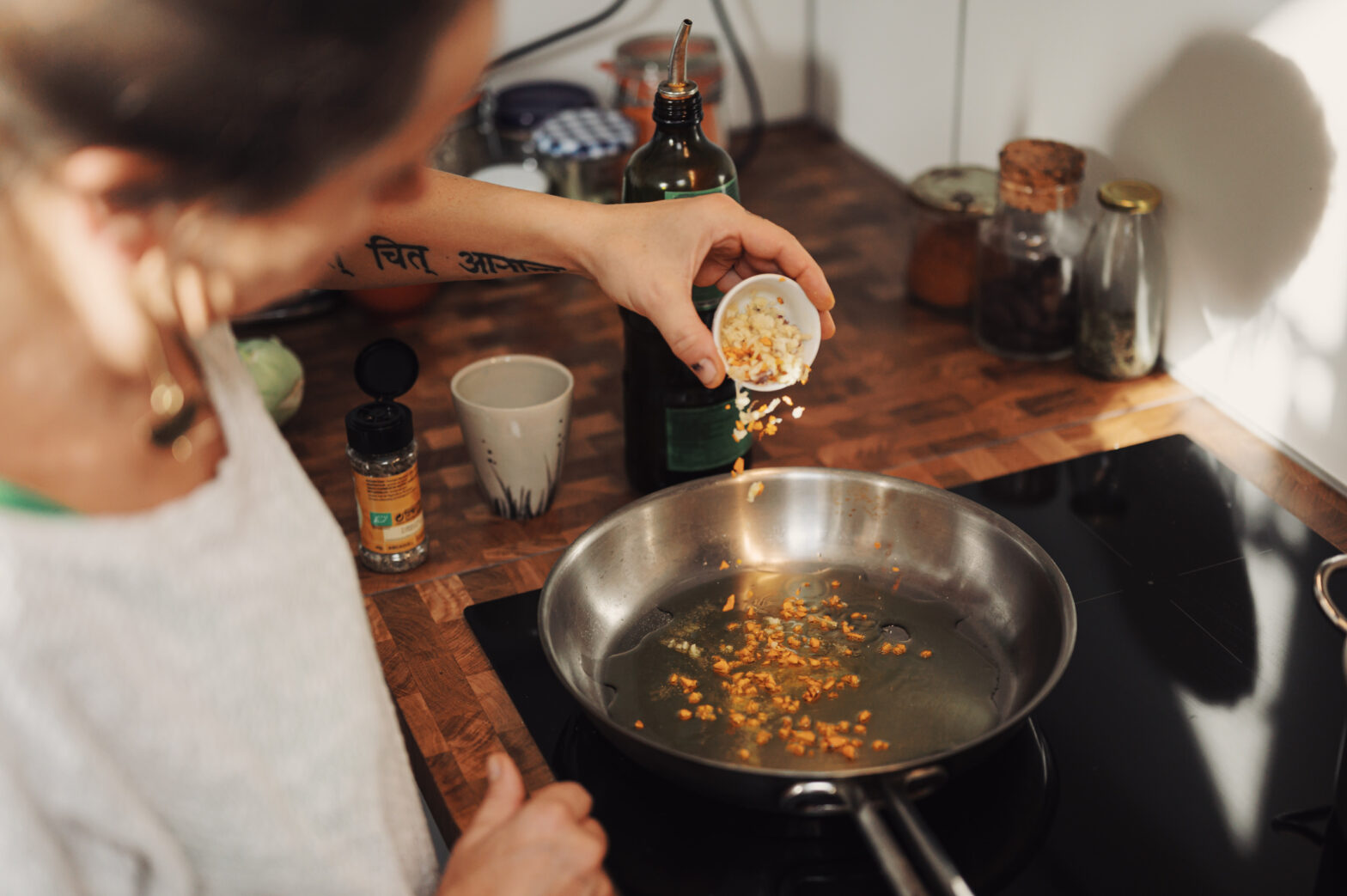The smoke and fumes released into household kitchens during cooking can contain unhealthy indoor air contaminants—and we don’t know nearly enough about the opportunities, trade-offs, and efficacy of the various solutions in the market that aim to address them.
That was the upshot of a presentation by building scientist Christopher Marleau and building science specialist Graham Finch, both employees of RDH Building Science, at a recent meeting of the Vienna House Technical Research Committee.
In their presentation, “Research on Air Quality Impacts from Cooking in Residential Kitchens,” Marleau and Finch shared highlights from their deep-dive review of the literature on this often overlooked source of indoor air pollution. They found many of the underlying assumptions about kitchen ventilation to be problematic.
While there has been a great deal of recent attention on the health and air quality impacts of natural gas stoves, they said, less is known about the risks of smoke and fumes generated in the pan sitting on the flame or element—via frying, roasting, searing, sautéing, and so on.
“It’s important that people get the whole picture, rather than just half of the equation,” Marleau explained, in reference to the relative amount of data on the kitchen contaminants produced by cooking compared with those produced by natural gas combustion.
The fumes and smoke associated with cooking can include polycyclic hydrocarbons, aldehydes, organic aerosols, and particulates—including fine particulates (PM2.5) that can reach the alveoli, the very smallest pockets of the lungs.
The standard mitigation response is the kitchen range hood, of course. But Marleau cited evidence that most residential kitchen exhaust systems underperform even if they’re designed and/or installed as specified. Further, surveys suggest that many home cooks rarely switch them on, because they’re noisy.
Then there are the performance guidelines, which vary widely, reported Marleau.
The National Building Code of Canada 2020 and 2015 International Residential Code recommend exhaust fans move between 100 to 106 cubic feet of air per minute, he noted. But after digging into the literature, the researchers were left wondering about the evidence basis for that flow-rate recommendation. Besides, they said, flow rate alone is a poor indicator of efficacy because there are many other factors at play. Such factors include the size of the range hood and its location relative to burners, among others.
Direct exhaust systems move kitchen fumes straight outdoors, but can have a significant impact on overall building performance.
First, they require two envelope penetrations, one for the exhaust vent and another for a replacement air duct. As a result, the pipework not only vents the airborne emissions of cooking, but also precious heat. In Edmonton, for example, a kitchen range hood running two hours a day and pulling 250 cubic feet per minute can lose up to 8.64 kWh of heat per square meter of floor area, Marleau said.
Metal ductwork also serves as a “thermal bridge”—that is, the material transfers precious building heat through the building’s enclosure to the outdoors. Warm and moist indoor air can also condense in the ducts, which can lead to water pooling in the system—another potential health risk for occupants.
Recirculating kitchen exhaust systems use fans to pull airborne contaminants through a filter, and do not exhaust directly outside. But they have their own issues and challenges.
In conclusion, Marleau and Finch recommend that architects, engineers, and other practitioners in general pay more attention to managing the contaminants generated during home cooking. To date, building scientists have relied too much on controlled laboratory settings, they said, and researchers should study in-situ exhaust flow rates and monitor fine particulates in real-world, statistically significant settings that account for occupant behavior.
“What we’re really missing is the human component,” said Marleau. “We have a lot of lab tested research and we need more data in real-world conditions.” They also recommend building owners and managers help educate occupants on the health impacts of cooking.
In a Q&A session following the presentation, Jamie Harte, an associate with PUBLIC: Architecture + Communication, said that the Vienna House design team has yet to specify a kitchen range hood model for the community’s homes.
That said, to reduce penetrations of the building envelope and also minimize opportunities for noise to enter the building from the adjacent SkyTrain line, the team does plan to select a recirculating model, he said.
Photo by Conscious Design on Unsplash



